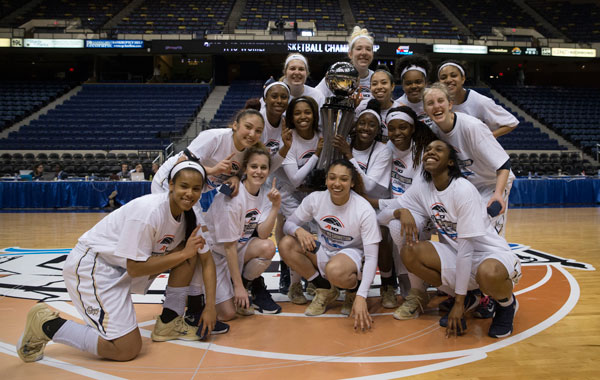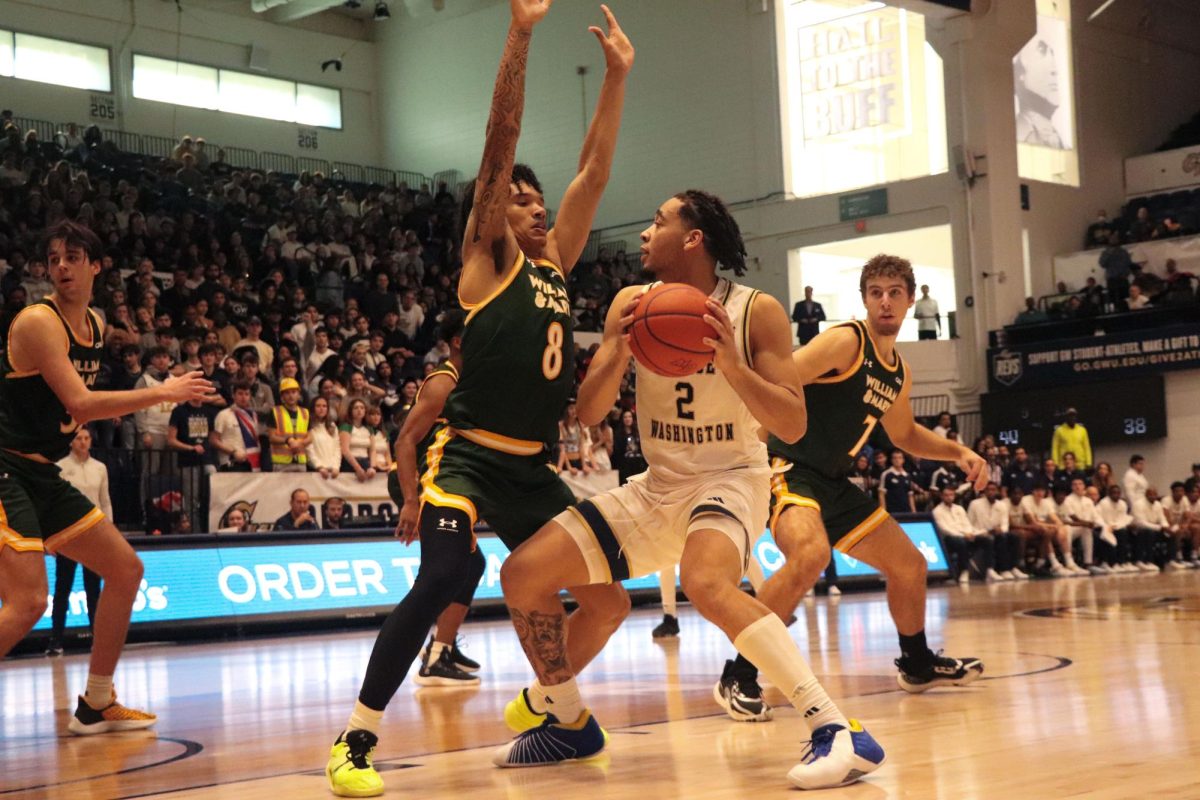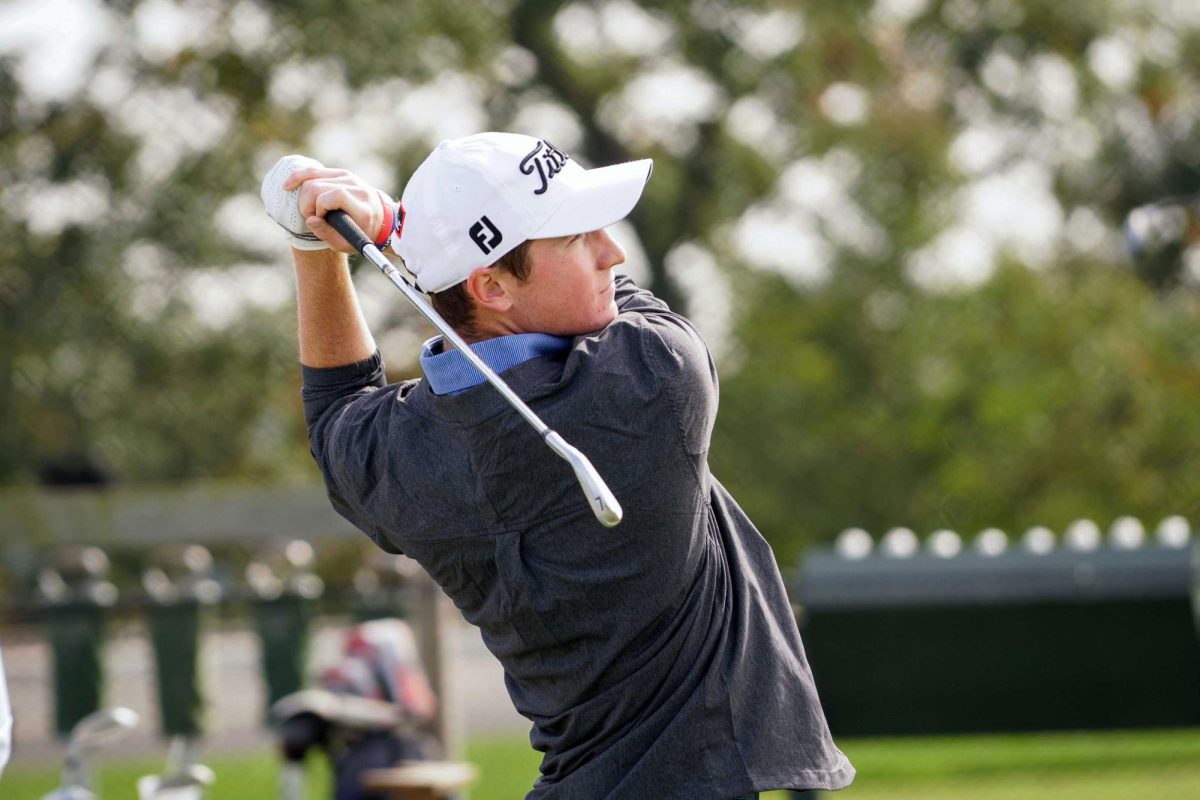
In a season in which women’s basketball achieved its goal of winning back-to-back Atlantic 10 titles and reached the NCAA Tournament for the second consecutive year, the Colonials had more successes than struggles.
But in the team’s 56-51 loss to Kansas State in the first round of the NCAA Tournament on Friday afternoon, GW could not overcome an excess of turnovers and shooting inefficiency. Those unfortunately familiar patterns would come to ultimately define the teams’ failures in the 2015-16 season.
Despite getting a heroic performance from senior Jonquel Jones (20 points, 13 rebounds and six blocks) in her final appearance as a Colonial and leading 31-22 at the half, GW shot a stunning 5-for-31 (16.1 percent) in the second half and committed 21 turnovers for the game.
Kansas State’s box-and-one zone defense allowed for more double teams on Jones from the point, cutting down on her touches inside and forcing the Colonials to swing the ball around the perimeter to look for different options. With that defense, the Wildcats got a 32-16 advantage in points in the paint.
“We just needed a little bit more help today,” said head coach Jonathan Tsipis. “[Jonquel] deserves that kind of attention and we knew it was going to come. It makes it tough when you outrebound your opponent by 10 on the offensive glass and then end up with only three more second chance points.”
The Colonials, as they have all year, dominated on the glass, outrebounding Kansas State 50-33, including 19 offensive boards. GW also got to the free throw line at will, converting 21-of-27 attempts from the charity stripe. Yet they simply could not overcome the turnovers and inefficiencies.
In the third quarter, Kansas State opened with a 9-0 run to tie the game at 31. The run was fueled by three straight GW turnovers, which led to seven consecutive points at the other end and got the Wildcats right back in the game. The Colonials committed seven miscues in the third period alone.
Coach Tsipis, who has said all season long that some of his teams’ turnovers are a function of their up-tempo offensive style, lamented his team’s execution.
“Three [turnovers] were off of inbounds plays out of bounds where I think we’re just trying to hard to score right away,” said Tsipis. “There were a few in transition where we just weren’t in good spots on the floor.
“They were costly. [The turnovers] gave them life, and you could tell they gained some confidence every time they got a takeaway. Especially when you control the glass like we did, even getting a shot up on possessions instead of turning the ball over I think would have allowed for some second opportunities where maybe we could have gotten to the free throw line more.”
The Colonials averaged over 17 turnovers per game for the year, compared with just over 15 for their opponents. In their seven losses, the Colonials averaged just over 16.8 turnovers, meaning that they actually had fewer turnovers cumulatively in losses than they averaged in their wins. This is somewhat marred, however, by 22, 20, and 21 turnover performances in key losses against Florida Gulf Coast, St. Bonaventure, and Kansas State, respectively.
GW shot 40.7 percent from the field and averaged 71.2 points per game for the season, however they struggled immensely in their losses. In seven defeats, the Colonials averaged just 64.1 points per game on 35.2 percent shooting, drastic decreases from their seasonal numbers.
And on the biggest stage in college basketball, the Colonials picked a bad time to experience the combination of poor ball control and abysmal shooting.
“It was just one of those games where a lot of shots that we usually make weren’t going in,” said Jones. “We just couldn’t close it out today.”
It was a sour ending to the season full of successes, even through injury and adversity. But given the teams accomplishments, the Colonials will be left wondering how far they could have gone had they been able to fix the turnover and shooting problems that came to define them during their struggles.








